From: Ishwar Sharan
How Christians created their persecution mythology – Candida Moss
 "There is an overpowering myth that Christianity was built on violent persecution by the Roman emperors. But that is very bad history—and sets a dangerous precedent for hyperbolic accusations of a 'war on Christians' today." – Prof. Candida Moss
"There is an overpowering myth that Christianity was built on violent persecution by the Roman emperors. But that is very bad history—and sets a dangerous precedent for hyperbolic accusations of a 'war on Christians' today." – Prof. Candida Moss
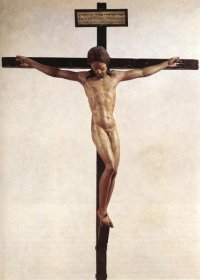 For Christians, the crucifixion is the event that changed everything. Prior to the death of Jesus and the emergence of Christianity most ancient people interpreted oppression, persecution, and violence as a sign that their deity was either irate or impotent. The crucifixion forced Jesus's followers to rethink this paradigm. The death of their leader was reshaped as triumph and the experience of persecution became a sign of elevated moral status, a badge of honor. The genius of the Jesus movement was its ability to disassociate earthly pain from divine punishment. As a result Christians identified themselves as innocent victims; they associated their sufferings with those of Jesus and aligned the source of those sufferings with the forces that killed Jesus. From the very beginning, victimhood was hardwired into the Christian psyche.
For Christians, the crucifixion is the event that changed everything. Prior to the death of Jesus and the emergence of Christianity most ancient people interpreted oppression, persecution, and violence as a sign that their deity was either irate or impotent. The crucifixion forced Jesus's followers to rethink this paradigm. The death of their leader was reshaped as triumph and the experience of persecution became a sign of elevated moral status, a badge of honor. The genius of the Jesus movement was its ability to disassociate earthly pain from divine punishment. As a result Christians identified themselves as innocent victims; they associated their sufferings with those of Jesus and aligned the source of those sufferings with the forces that killed Jesus. From the very beginning, victimhood was hardwired into the Christian psyche.
The enduring impact of this idea is evident in the rhetoric of modern-day Christians. In the weeks that followed the recent papal resignation, Cardinal Mahony of Los Angeles, who was accused of participating in the coverup of sexual abuse by priests, described himself in terms appropriate to a martyr: as a scapegoat who suffered like Jesus. Because of the nature of the crimes for which he is suspected, Mahony's claims that he is being persecuted have been universally dismissed, but other similarly hyperbolic instances of American Christians crying "persecution" slip into the public square.
 The belief that Christians are continuously persecuted has a basis in Scripture. In the Gospel of Mark, Jesus instructs his followers to take up their cross and follow him and predicts that his followers will be persecuted for his name. Then again, in the very same passage he predicts that some of those standing before him will not taste death before the arrival of his kingdom in glory. Why do we accept the prophecy of persecution when the statement about the disciples living until the last judgement clearly failed? The reason why Jesus's statements about persecution have had such a pronounced impact on the formation of Christian identity is that this prophecy is believed to have been proven in the experiences of the early church. The church has suffered since the beginning, the argument goes, and we are persecuted now as we have always been.
The belief that Christians are continuously persecuted has a basis in Scripture. In the Gospel of Mark, Jesus instructs his followers to take up their cross and follow him and predicts that his followers will be persecuted for his name. Then again, in the very same passage he predicts that some of those standing before him will not taste death before the arrival of his kingdom in glory. Why do we accept the prophecy of persecution when the statement about the disciples living until the last judgement clearly failed? The reason why Jesus's statements about persecution have had such a pronounced impact on the formation of Christian identity is that this prophecy is believed to have been proven in the experiences of the early church. The church has suffered since the beginning, the argument goes, and we are persecuted now as we have always been.
But what if Christians were not always persecuted? What if there never was an "Age of the Martyrs"? When we look at the evidence, it becomes clear that the stereotype of cruel Roman emperors persecuting innocent Christians is a myth. From the Roman side, there is scant evidence for the persecution of Christians. It is not even clear that the Romans knew about the existence of Christians until the early second century. Even then they didn't see Christianity as a religion. They describe it, rather, as a foolish superstition that could potentially harm local economies. Christians undoubtedly died as a result of legislation passed during the reign of the emperor Decius (ca. AD 250), but not because he was targeting them. Intriguingly, not a word of our Roman evidence for his legislation refers to Christians.
With the exception of the Great Persecution of Diocletian (AD 303-305), when Christians were indeed actively persecuted, it is difficult to find any examples of Roman emperors behaving as Christians typically portrayed them. Apart from this comparatively brief period, and an even briefer one during the reign of Valerian in 257-58, Roman emperors never targeted Christians for attack. At the beginning of the second century, the emperor Trajan actually stipulated that Christians were notto be sought out. Roman emperors simply don't appear to have been that interested in Christians. For most of the first three centuries of their existence Christians flourished: they held lofty political positions, and were so comfortable under the Romans that they even constructed a prominent church across the road from the imperial palace in Nicomedia.
The overwhelming majority of Christians idealized martyrdom and suffering like Jesus, but very few of them died violently—and even fewer died as the result of the kind of persecution described in Sunday school. Romans had good reason to be concerned about Christians. Scandalous rumors of Christians participating in incestuous orgies and practicing cannibalism were widely circulated. More important, Christians sounded a lot like revolutionaries. In courtrooms they stated that they were unable to respect anyone but Christ, their new emperor. Roman officials had no problem executing political subversives—this was a world in which Jon Stewart would be executed for his institution-challenging satire. Ancient empires were accustomed to reshaping the religious identities of those they bested in war. The Romans magnanimously allowed conquered groups to maintain their own religious traditions and implement their 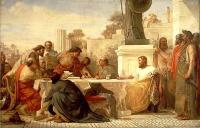 own law at their own discretion. But this generosity ended when it became socially disruptive or politically subversive. Christians threatened the stability of the empire, and when we look at their interactions with Roman authorities, we might even find ourselves sympathizing with the Romans.
own law at their own discretion. But this generosity ended when it became socially disruptive or politically subversive. Christians threatened the stability of the empire, and when we look at their interactions with Roman authorities, we might even find ourselves sympathizing with the Romans.
Given that the Roman evidence for persecution is so thin, the origin of our misunderstandings about the early church must, and does, lie with the early Christians themselves. There are literally thousands of stories of Christians martyrs being brutally tortured and killed, but the overwhelming majority of these were written long after the events they claim to describe. Who is responsible for these misunderstandings about history? And why did they alter the historical record? One of the reasons is the explosion of the cult of the saints, the passion for collecting and displaying holy relics, in the fifth century and beyond. Everyone wanted a piece of the action and innumerable stories about martyrs were fabricated to support local churches and to attract pilgrims to particular towns.
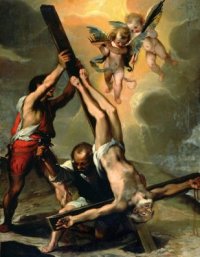 Even the earliest, most ostensibly trustworthy, martyrdom stories have been edited and reworked. The authors of these accounts borrowed from ancient mythology, changed the details of events to make the martyrs appear more like Jesus, and made the Roman antagonists increasingly venomous. Peeling back the layers of editorial work is like watching textual plastic surgery; even small changes radically alter our understanding of the subject. Legend maintains that the Apostle Peter asked to be crucified upside down out of humility, but comes from a sixth century rewriting. Fascinatingly, the earliest version of the story gives a very different and almost mysterious explanation. Other ancient authors were less artful. Lazy biographers of the saints sometimes pasted together the story of a martyr's death from the writings of his colleagues and we can pull these apart without difficulty. We need not accuse the priest-scribes who created these accounts of any malicious deception, as these kinds of literary practices were fairly common at the time, but nor, certainly, can we conclude that they're giving us the historical facts. Even if Christians choose to venerate individual martyrs—regardless of whether the stories are true or not—we should not leap to the conclusion that ancient Christians as a collective whole were constantly persecuted. We simply lack the necessary evidence to support such a claim. Faith in martyrs is one thing; historical claims about persecution are quite another.
Even the earliest, most ostensibly trustworthy, martyrdom stories have been edited and reworked. The authors of these accounts borrowed from ancient mythology, changed the details of events to make the martyrs appear more like Jesus, and made the Roman antagonists increasingly venomous. Peeling back the layers of editorial work is like watching textual plastic surgery; even small changes radically alter our understanding of the subject. Legend maintains that the Apostle Peter asked to be crucified upside down out of humility, but comes from a sixth century rewriting. Fascinatingly, the earliest version of the story gives a very different and almost mysterious explanation. Other ancient authors were less artful. Lazy biographers of the saints sometimes pasted together the story of a martyr's death from the writings of his colleagues and we can pull these apart without difficulty. We need not accuse the priest-scribes who created these accounts of any malicious deception, as these kinds of literary practices were fairly common at the time, but nor, certainly, can we conclude that they're giving us the historical facts. Even if Christians choose to venerate individual martyrs—regardless of whether the stories are true or not—we should not leap to the conclusion that ancient Christians as a collective whole were constantly persecuted. We simply lack the necessary evidence to support such a claim. Faith in martyrs is one thing; historical claims about persecution are quite another.
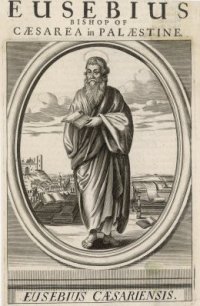 Claims about violent persecution may not be historically accurate, but in the hands of ancient Christian writers they did valuable work shoring up the authority of the church. The fourth-century historian Eusebius was able to use the stories of the martyrs to combat heresy and to establish the succession of bishops in the early church. When the origins of the episcopacy in France were clouded, Eusebius invented an anecdote in which Gallic martyrs wrote to the bishop of Rome recommending a particular candidate. When he wanted to demonstrate the errors of a particular heresy, he would cleverly tell a story in which a martyr denounced the schismatic group's leader. This fascinating invention of the history of persecution set a precedent. Later generations of medieval copyists would do the same—inserting doctrinal formulae into the mouths of expiring martyrs. Eusebius began a long-lived tradition of equating dissent and disagreement with persecution. He argued that the church is fundamentally under attack and that, just as Roman officials attacked her in the past, now heretics attack her in the present. The essential idea is polarization: us against them, good against evil. Once Constantine allowed Christianity to become a state-sponsored religion in the fourth century, some Christians went on the offensive. They sought out pagan temples to destroy, with high hopes of dying and becoming martyrs. The memory of authentic persecution under Diocletian did not make Christians forgiving and generous toward the now disenfranchised pagans. The rhetoric of persecution perpetuated by early Christian writers, rather, created a polarized view of the world that only heaped violence on top of violence.
Claims about violent persecution may not be historically accurate, but in the hands of ancient Christian writers they did valuable work shoring up the authority of the church. The fourth-century historian Eusebius was able to use the stories of the martyrs to combat heresy and to establish the succession of bishops in the early church. When the origins of the episcopacy in France were clouded, Eusebius invented an anecdote in which Gallic martyrs wrote to the bishop of Rome recommending a particular candidate. When he wanted to demonstrate the errors of a particular heresy, he would cleverly tell a story in which a martyr denounced the schismatic group's leader. This fascinating invention of the history of persecution set a precedent. Later generations of medieval copyists would do the same—inserting doctrinal formulae into the mouths of expiring martyrs. Eusebius began a long-lived tradition of equating dissent and disagreement with persecution. He argued that the church is fundamentally under attack and that, just as Roman officials attacked her in the past, now heretics attack her in the present. The essential idea is polarization: us against them, good against evil. Once Constantine allowed Christianity to become a state-sponsored religion in the fourth century, some Christians went on the offensive. They sought out pagan temples to destroy, with high hopes of dying and becoming martyrs. The memory of authentic persecution under Diocletian did not make Christians forgiving and generous toward the now disenfranchised pagans. The rhetoric of persecution perpetuated by early Christian writers, rather, created a polarized view of the world that only heaped violence on top of violence.
 This idea of constant attack and Christian victim-hood is grounded in the myths of the early church, but it endures to this day. It is evident in the rhetoric of modern American media pundits, politicians, and religious leaders who proclaim that there is a war on Christianity in modern America. The problem with identifying oneself and one's group as a persecuted minority is that it necessarily identifies others as persecutors. It is certainly the case that Christians—and members of other religious groups—around the world endure horrifying violence and oppression today. But it is rarely those voices or calls for action on their behalf that reach our ears. On the contrary, these experiences are drowned out by louder, local complaints.
This idea of constant attack and Christian victim-hood is grounded in the myths of the early church, but it endures to this day. It is evident in the rhetoric of modern American media pundits, politicians, and religious leaders who proclaim that there is a war on Christianity in modern America. The problem with identifying oneself and one's group as a persecuted minority is that it necessarily identifies others as persecutors. It is certainly the case that Christians—and members of other religious groups—around the world endure horrifying violence and oppression today. But it is rarely those voices or calls for action on their behalf that reach our ears. On the contrary, these experiences are drowned out by louder, local complaints.
Instances of oppression, violence, and persecution do not need a history of persecution or a commitment to victim-hood to support them. The mistreatment of Christians in modern India, for example, is not wrong because it is part of a history of persecution. It is just wrong. Nor is it somehow more outrageous than violence against Muslims or Hindus there.
[Sic: Christians in India are not and have never been mistreated. It is an absurd statement for the learned author to make. Christians are a very privileged minority in India with social and political influence far exceeding their numbers. Isolated attacks on missionaries by exasperated Hindu individuals in Orissa and Madhya Pradesh, provoked by the aggressive and destructive conduct of the missionaries themselves, cannot be extrapolated into a "mistreatment of Christians in modern India". In fact from the 8th century to 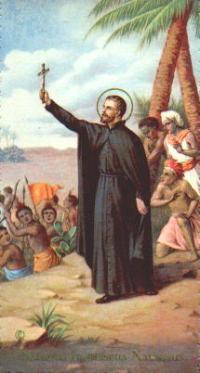 the 16th century, Nestorian Christian refugees from West Asia and Portuguese pirates and missionaries from Europe were the perpetrators of the most heinous crimes in India including the destruction of Hindu temples in order to build St. Thomas churches, forced conversions to Christianity and conversions by stealth---inculturation---and the establishment of the most notorious and cruel Inquisition in Goa brought by Francis Xavier. - IS]
the 16th century, Nestorian Christian refugees from West Asia and Portuguese pirates and missionaries from Europe were the perpetrators of the most heinous crimes in India including the destruction of Hindu temples in order to build St. Thomas churches, forced conversions to Christianity and conversions by stealth---inculturation---and the establishment of the most notorious and cruel Inquisition in Goa brought by Francis Xavier. - IS]
Most importantly, the myth of persecution can actually generate violence. At the beginning of the First Crusade, Pope Urban II promised Christian soldiers the rewards of martyrdom if they died in the conflict. The historical factors are complicated, and medieval European Christians did see themselves as under attack, but their actions cannot be dismissed as "self-defence." This is a cautionary example for us. There is always the possibility that we have no sense of our own position in a conflict. Even though we cast ourselves as martyrs, we might be crusaders.
The example of Jesus that hangs at the centre of Christianity encouraged his followers to embrace suffering and to stand firm in times of persecution. But even if Christians are called to embrace suffering and victimization, we can do without a story of persecution that is inaccurate, unproductive, and polarizing. Nor should we build our interpretation of the present on errors about the past. - The Daily Beast, 31 March 2013
» Candida Moss is Professor of New Testament and early Christianity at the University of Notre Dame and the author of The Myth of Persecution.
St. Thomas about to be speared by his Hindu assassin. This deeply offensive mural is found in the tomb shrine below St. Thomas Cathedral in Chennai.
St. Thomas: India's own infamous Christian persecution myth – IS
Bardesanes wrote the Acts of Judas Thomas, the source of the St. Thomas in India legend, as a moral fable to instil sexual discipline in his Edessene Christian congregation—the Church has always had a problem with sexual profligacy. He set the story in India as being the place of all kinds of exotic religions that he had heard about from travelling Brahmins and Buddhist monks. In his tale he has Judas Thomas—twin brother of Jesus no less—cheat a Persian king of large sums of money by promising to build him a palace. After he is caught, imprisoned, and later released, Thomas runs away and has a number of exciting adventures including a fight to the death with Satan. He meets another Persian king, who, initially showing him great kindness and generousity, loses patience with his wicked deeds and has him executed for abducting women and practising black magic. This king, Mazdai by name—indicating a devotee of Zarathustra's god Ahura Mazda—has Thomas buried in a royal tomb on a mountain in a desert country that is never named. Later in the 4th century, when West Asian Christian refugees brought the tale from Edessa to the Malabar Coast, Thomas is identified with India rather than Persia and even made the missionary of Nambudiri Brahmins in order to give the new Christian community caste status. In Kerala the tale of Thomas grows and evolves with new additions made by new Christian migrants from Persia. It no longer reflects Bardesanes' moral fable but rather a concocted mythology of Indian Christian identity. These Syrian Christians—as they are still called—are great travellers and merchants, and Marco Polo hears the tale from them, probably in Constantinople—as scholars now doubt that he ever went to China. The story of Thomas's death—by accident according to Marco—-and internment is included in his famous adventure book Il Milione published in Europe in the 13th century. Marco places Thomas's tomb on the Coromandal Coast in an unnamed Tamil village rather than on a Persian mountaintop as in theActs of Thomas. From this popular piece of travel fiction there is no going back, and the tomb of St. Thomas is identified with the great Kapaleeswara Shiva Temple in Mylapore by the Portuguese in the 16th century. They invade Mylapore, a prosperous port with a good harbour, have the Kapaleeswara Temple destroyed—it seems to have taken them fifty years to do this evil deed by encroachment and vandalism, and because they are resisted by the native Hindu population until it is overwhelmed by superior Portuguese fire-power—and build a fake St. Thomas tomb out of materials brought from Goa. Soon after the tomb is established a new St. Thomas Church is built over it by Dominican monks. The pious fable of a Christian apostle's persecution and death at the hands of a Hindu raja and his jealous Brahmin priest is now established in South India and the world. The Christian community can claim—by the grace of Portuguese pirates!—to be the followers of the 'original' Christian religion brought by Thomas to the Tamil people. They can and do solicit recognition and money for it from the world Christian community. More important, the Hindu community that has generously hosted the Christian community in India since the 4th century, can be maligned and spiritually discredited as the vicious assassins of a Christian apostle and saint. The fact that no historian, starting with the Early Church Fathers in Egypt to the learned historians of the last two hundred years including Pope Benedict XVI, subscribe to the details of this fable and support it as true, does not matter to the Indian Christian community in the least. They have got their dearly loved persecution tale with its blood and gore, and they are not going to let go of it even for the Pope in Rome. – The Ishwar Sharan Archive
--
sent from samsung galaxy note, so please excuse brevity
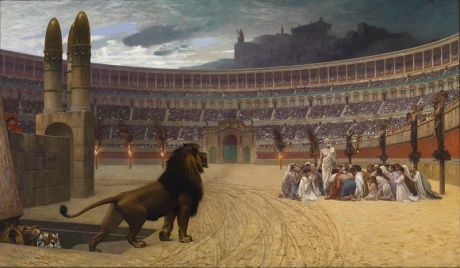
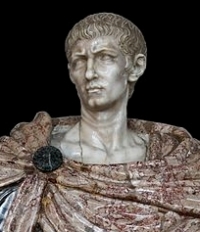

No comments:
Post a Comment